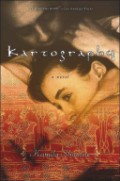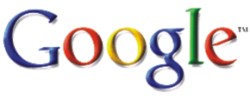|
International
To Google or not to Google
Kamila Shamsie
 “I want you to come and talk to my class about Burnt Shadows," an academic friend said to me earlier this year while I was on a book tour in America. "But first you have to promise me one thing: you won't tell the students you did most of the research for your novel via Google." “I want you to come and talk to my class about Burnt Shadows," an academic friend said to me earlier this year while I was on a book tour in America. "But first you have to promise me one thing: you won't tell the students you did most of the research for your novel via Google."
"Not even if I say I used Google to find books or journal articles which I then checked out of libraries?"
"Not even then."
"What if I say I used Google Images to find photographs of Nagasaki before the bomb?"
"Perhaps."
"And Google Earth to help me visualise places I was writing about but had never visited."
"Well, OK."
"And YouTube to understand how to dismantle an AK-47?"
"Hmm ... "
I did use Google, Google Images and YouTube for all the reasons mentioned. It was straightforward research, using the tools at my disposal. But when it came to Google Earth - the programme that allows you to view all parts of the world via satellite imagery, from different angles - my first encounter left me somewhat distressed.
I had spent months, up to this point, researching Nagasaki before the bomb. All the images I'd looked at, the stories I'd sought out, the details I'd accumulated about history, land ownership, artistic production and so on started around the 15th century, and then came to a halt just days after 9 August 1945. So it was with a peculiar sensation, close to outrage, that I zoomed into Google Earth's images and saw a 21st-century city labelled Nagasaki.
The outrage passed quickly into embarrassment at my own idiocy for feeling so unprepared for the contemporary reality of Nagasaki. And then I was able to see the great gift that Google Earth had given me - an ability to see the topography of all Nagasaki as one continuous mass; until now I had been trying to stitch images together in my mind, but I was all too aware of the frayed edges. Now, here it was, the entire city spread out before me. Here the former Foreign Settlement - I dropped a pinmark on the precise plot of land where I imagined my character, Konrad, lived - and here the Megane-Bashi bridge over the Oura river, across which the young lovers walked (another pinmark there), and here the epicentre of the bomb (no need for me to drop a pinmark there; the Google Earth community had already labelled it), and here - I used Google Earth's measuring tools to find a spot outside the 1km radius of the blast within which almost all living things were killed - the place where the survivor stood in the moment Nagasaki went up in a flash of light.
 What did any of this add to my novel? I can't think of a single sentence that I altered or added after my encounter with Google Earth. And yet, if the key to writing about a place you've never been is to first convince yourself that you know it before you set about convincing your readers, then few pieces of research were more valuable than the obsessive hours I spent on Google Earth following the tracks of my characters. What did any of this add to my novel? I can't think of a single sentence that I altered or added after my encounter with Google Earth. And yet, if the key to writing about a place you've never been is to first convince yourself that you know it before you set about convincing your readers, then few pieces of research were more valuable than the obsessive hours I spent on Google Earth following the tracks of my characters.
But Google Earth is far from being immune to the imbalance of knowledge production in different parts of the world. When I needed to remind myself of tiny details about New York City, the programme offered me everything I could want: 3D models of buildings, amazingly high-resolution images, links to photographs and video streams of Manhattan (this was before "street view" was unveiled as a Google Earth feature). But when it was Afghanistan I was researching, my attempts to locate a certain shrine near the Arghandab river led to failure: all Google Earth showed me of that - and of many other parts - of Afghanistan was an indistinct blur, and the only clues to topography came from the colours within the blur: blue for rivers, brown for desert, green for fertile land. The blurred images, contrasted with the detailed views of New York, spelt out a simple message: Here Be Dragons.
What is a writer to do when confronted with such a blurry map, but to allow the imagination to take over? I dropped pinmarks (visible only to me, and not to other users) across different parts of Afghanistan - "the shrine", "along the escape route", "Harry and Raza". As I did this, I recalled my research for an earlier novel, Kartography, which led me to an essay by Christian Jacob explaining that Eratosthenes (circa 276-195BC) was the first man in ancient Greece to create a distinction between literary maps and the charts of travellers. The "major consequence", as Jacob has it, of this decision was that Homer was excluded from the corpus of geographical sources. Eratosthenes' decision seems perfectly sensible now, but it caused such a split in the ranks of cartographers that two centuries later Strabo, author of the 17-volume encyclopedia Geographia, was still attempting to "rehabilitate" The Odyssey into the world of geography by insisting that travellers lie all the time while Homer was depicting geographical truths in the language of poetry.
Today, Google Earth's Afghanistan map is far less blurry than it was three years ago when I first looked at it. But as I click through all the YouTube links tattooed across the skin of Afghanistan, I encounter video clips of American solders firing on the Taliban, Canadian politicians visiting troops, Dutch forces engaged in battle, an IED blast narrowly missing a convoy of US soldiers, a video game in which a chopper hails down missiles and bullets on a virtual city which looks more like Baghdad than Kabul.
Eratosthenes may have tried to separate fiction from fact in the world of cartography, but more than 2,000 years later we're still using maps to inscribe our stories on the world.
Copyright
(R) thedailystar.net 2009
|
